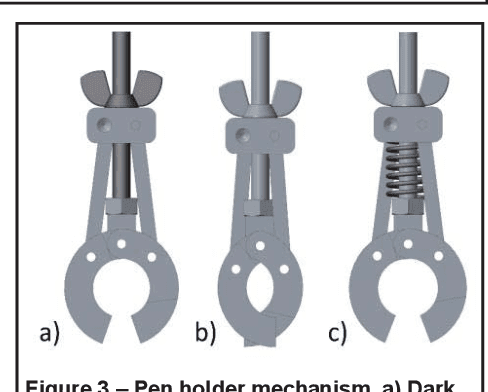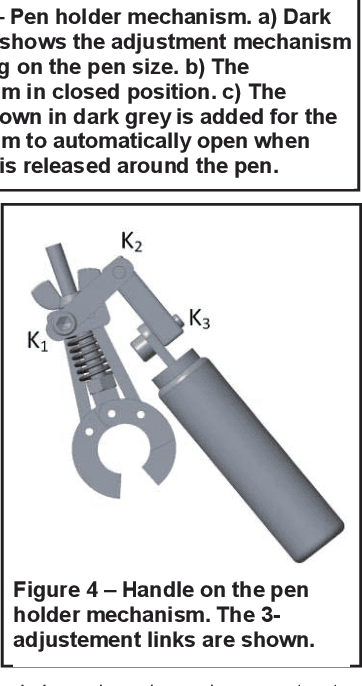Thierry Laliberté
Mechanical Design Improvement of a Passive Device to Assist Eating in People Living with Movement Disorders
Oct 14, 2020Abstract:Many people living with neurological disorders, such as cerebral palsy, stroke, muscular dystrophy or dystonia experience upper limb impairments (muscle spasticity, loss of selective motor control, muscle weakness or tremors) and have difficulty to eat independently. The general goal of this project is to develop a new device to assist with eating, aimed at stabilizing the movement of people who have movement disorders. A first iteration of the device was validated with children living with cerebral palsy and showed promising results. This validation however pointed out important drawbacks. This paper presents an iteration of the design which includes a new mechanism reducing the required arm elevation, improving safety through a compliant utensil attachment, and improving damping and other static balancing factors.
Mechanical Orthosis Mechanism to Facilitate the Extension of the Leg
Oct 14, 2020



Abstract:This paper presents the design of a mechanism to help people using mechanical orthoses to extend their legs easily and lock the knee joint of their orthosis. Many people living with spinal cord injury are living with paraplegia and thus need orthoses to be able to stand and walk. Mechanical orthoses are common types of orthopedic devices. This paper proposes to add a mechanism that creates a lever arm just below the knee joint to help the user extend the leg. The development of the mechanism is first presented, then followed by the results of the tests that were conducted.
Preliminary design of a device to assist handwriting in children with movement disorders
Aug 06, 2019



Abstract:This paper presents the development of a new passive assistive handwriting device, which aims to stabilize the motion of people living with movement disorders. Many people living with conditions such as cerebral palsy, stroke, muscular dystrophy or dystonia experience upper limbs impairments (muscle spasticity, unselective motor control, muscle weakness or tremors) and are unable to write or draw on their own. The proposed device is designed to be fixed on a table. A pen is attached to the device using a pen holder, which maintains the pen in a fixed orientation. The user interacts with the device using a handle while mechanical dampers and inertia contribute to the stabilization of the user's movements. The overall mechanical design of the device is first presented, followed by the design of the pen holder mechanism.
 Add to Chrome
Add to Chrome Add to Firefox
Add to Firefox Add to Edge
Add to Edge